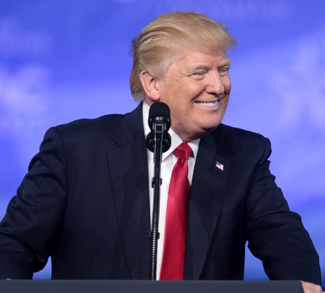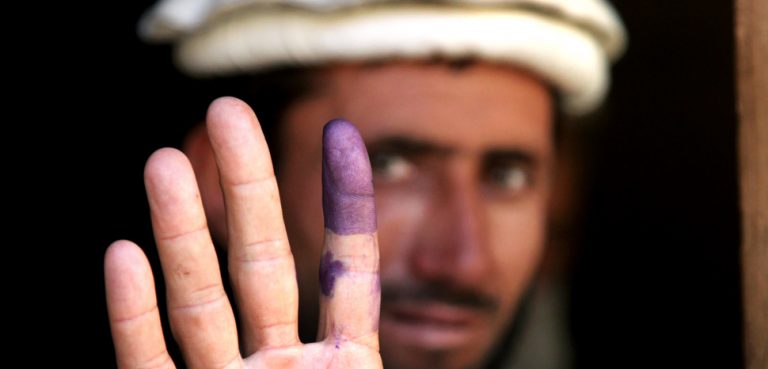Geoeconomics was originally defined by the strategic thinker Edward Luttwak as the logic of conflict expressed through the grammar of commerce. As such, it represents an analytical model that is appropriate to examine the involvement of geopolitical forces in the economic sphere of wealth, markets, trade, business, and money. The contemporary pertinence of this hybrid paradigm has been emphasized by structural game-changers like rising economic multipolarity, the weaponization of complex interdependence, the quest to control scarce raw materials, the recurrence of systemic financial crises that unleash disruptive consequences, the ongoing struggle to master advanced technologies, the growing role of the state in economic affairs, the proliferation of all manner of illicit flows, and the conformation of regional blocs to pursue shared interests through combined strength.
In the particular context of Afghanistan, the limited usefulness of sheer military might has been dramatically demonstrated in the withdrawal of Soviet and American forces, both of which were overwhelmingly superior ‒ in terms of weaponry, technology, and economic resources ‒ to the local insurgents they were trying to crush. The defeat of both superpowers means that hard power alone is not enough to shape the course of events there. In fact, the facts on the ground illustrate that trying to conquer Afghanistan with armies can be counterproductive for foreign invaders. Venturing into such a black hole can end up depleting their power, resources, vitality, and morale.
On the other hand, the recent takeover of the Taliban has been seen as an event that can encourage acts of jihadist terrorism. Although their victory will be seen as a source of inspiration for Sunni Islamist militants all over the world, the Taliban are likely aware that, although the prospect of actively sponsoring transnational Salafism ‒ the uncompromising fundamentalist ideology championed by entities such as al-Qaeda and various branches of ISIS ‒ represents a powerful threat that can be instrumental in exacting concessions from heavyweights interested in containing said phenomenon, Taliban leaders must calculate carefully the repercussions of their actions. As history has demonstrated, playing hardball with great powers always carries the risk of harsh reprisals.
In summary, using force to determine the fate of Afghanistan can be dangerous for both the Taliban and the external players that are participating in the latest version of the ‘Great Game.’ However, that does not mean that immobility will prevail. In fact, there are alternative options that can be even more effective than the kinetic projection of power and much less problematic as igniters of overt conflict. Hence, the cards that are waiting to played include natural resources, opium, and regional synergic partnerships.
Natural Resources
According to media leaks from a decade ago ‒ back when Afghanistan was still under American military occupation‒ the US had allegedly discovered mineral deposits worth nearly one trillion dollars. Such sources even claimed that the Pentagon’s internal documents reported that Afghanistan could become “the Saudi Arabia of lithium” in the near future. That metal is crucial for the batteries of both electronic devices and electric cars; it is also crucial for military delivery systems of nuclear weapons and the manufacture of solar energy storage technologies. Likewise, research undertaken by the United States Geological Survey (USGS) suggests that Afghanistan’s mineral wealth also contains 1.4 million tons of rare-earth minerals. These lanthanides ‒ whose distribution across the globe is remarkedly uneven ‒ are instrumental for state-of-the-art technological civilian and military innovations related to the so-called “Fourth Industrial Revolution.” Hence, demand for said resources responds to both market forces and statecraft.
Although the exact figures are disputed, it seems Afghanistan offers substantial amounts of strategic metallic minerals. Access to them and their control are matters of national security, especially in an environment in which China and the United States are engaged in a growing rivalry for technological superiority and global geo-economic leadership. Considering the current state of affairs in terms of comparative advantages and the present correlation of forces after the chaotic pull-out of US forces, it looks as though Beijing is better positioned to become the highest bidder in the race to claim the prize. After all, the Chinese have the necessary capital, the political will to approach the Taliban, and the capability to develop the infrastructure networks that would have to be created. However, it is unknown if the Middle Kingdom could count on stable security conditions in a country’s whose hinterland has been unruly ‒ to say the least ‒ for decades.
In addition, Afghanistan’s underground treasures contain considerable amounts of hydrocarbons, including both natural gas and oil, particularly in areas located in close proximity with its border with Tajikistan. The USGS estimates that gas reserves total 15.7 trillion cubic feet, whereas oil reserves would amount to 3.6 billion barrels. Apparently, Soviet geologists, statesmen and policymakers were aware of this when Afghanistan was under the occupation of the USSR but back then the Eurasian communist superpower’s irreversible economic downturn was already underway. Nonetheless, things are different right now. For instance, China, India and the European Union are desperately trying to guarantee their energy security, a goal that requires the diversification of their suppliers. Furthermore, Russia, Iran and certain states from the post-Soviet space ‒ such as Turkmenistan and, to a lesser extent, Azerbaijan ‒ are trying to use their exports of energy resources to advance geostrategic interests. Hence, Afghanistan can act as a provider and, through transnational pipeline networks, also a ‘crucial transit corridor’ in the supply of energy for Eurasian economies dependent on external sources.
Finally, the territory of Afghanistan also has abundant deposits of high-quality gemstones like lapis lazuli, emeralds, beryl and tourmaline, as well as small quantities of rubies and aquamarine. Although the industrial applications of these minerals are limited, their natural beauty and applications in jewelry make them assets whose economic potential can be harnessed for the sake of development and prosperity. So far, geopolitical volatility has been an obstacle for their systematic commercial exploitation and unlawful extraction is seemingly an endemic problem. However, if a reasonable degree of stability can prevail, then perhaps the situation can change for the better.
The Opium Trade
Opium is not just an illicit drug. In fact, it operates as a highly strategic commodity for several reasons. Opium poppies must be grown under specific geographic conditions that only exist in certain specific locations. Moreover, opiates circulate through long transnational logistical chains and sophisticated concealment methods are needed so that they can cross borders; and, perhaps more importantly, the control of these flows represents profit margins worth fighting and dying for. Moreover, the governance structure of the markets in which opiates are traded is exceedingly complex, as it usually involves actors like organized crime networks, warlords, terrorists, insurgents, strongmen, smugglers, and corrupt government officials and businessmen. However, its unsavory nature goes much further than that.
In fact, the drug trade is one of the key global engines of money laundering, the financial process whose purpose is to carry out transactions and operations conceived to hide the true nature of illicit profits and make them look legitimate. The volume of this phenomenon cannot be underestimated. In order to keep things in perspective, according to the United Nations Office on Drugs and Crime (UNODC), money laundering represents between 2% and 5% of global GDP. Moreover, some former officials of said intergovernmental agency have even openly stated that the constant inflow of drug money prevented the collapse of some big banks in the wake of the 2008 global financial crisis. It is important to note that money laundering cannot be understood without considering the role played by corporate financial entities whose powerful connections make them untouchable ‒ ‘too big to prosecute’ ‒ and the complicity of a constellation of offshore jurisdictions that provide conditions of strict secrecy for banking activities.
As some analysts have noted, the drug trade flourishes in a ‘covert netherworld’ that attracts the participation of intelligence agencies interested in discreet sources of funding for clandestine operations or in a subtle and stealthy way to destabilize enemy states. It must be borne in mind that opiates can be weaponized because their harmful effects and their addictive nature make them highly corrosive for their consumer markets. After all, the widespread consumption of opiates in a society is detrimental for economic development, law enforcement, public health, social cohesiveness and overall societal wellbeing.
Concerning the particular case of Afghanistan, according to official statistics in the latest edition of the World Drug Report, prepared by the UNODC, the Central Asian country represents roughly 76% of the total hectares dedicated to opium poppy cultivation on a global scale. When in power for the first time, the Taliban ‒ inspired by Sharia Law’s strict condemnation of many psychoactive substances ‒ had managed to pretty much eradicate the cultivation of the crop on Afghan soil. Therefore, it would be reasonable to expect a similar course of action now that the Taliban are in charge once again.
However, the Taliban government faces a dilemma that cannot be easily solved. The cultivation of opium poppies is likely the only source of income for a substantial amount of the impoverished and war-torn country. Suppressing the practice abruptly would deprive many rural people of the only functional way of making a living that’s available to them. Needless to say, such a decision would fuel discontent and perhaps even unrest, particularly in an economic context shaped by rising food costs. On the other hand, a deliberate policy of benign neglect might invite unwanted attention, diplomatic pressure, or even coercive measures from regional powers.
There are signs that the Taliban are inclined to act pragmatically and their statements indicate that they would be willing to attract investments that generate reliable ‒ and legal ‒ sources of income. That would likely entail a crop substitution program, but the attainment of concrete outcomes as a result of such projects will require time. Progress does not materialize overnight, and that is a problem when there are pressing needs waiting to be satisfactorily met.
Yet there are a couple of counterintuitive possibilities that might be considered in the meantime. The first has to do with the legal cultivation of opium poppies for the production of morphine, a powerful painkiller that is needed for medical purposes in times of both peace and war. Nevertheless, ensuring the appropriate standards and regulations are implemented is notoriously challenging in a place like Afghanistan. The second would involve the strategic weaponization of opium flows against countries seen as hostile, a Machiavellian card of statecraft that could pay off, even though it would entail meaningful risks.
Interestingly, both hypothetical courses of action are not necessarily mutually exclusive. It is never unwise to bear in mind that extraordinary circumstances demand extraordinary measures, especially when the benefits outweigh the costs. As Henry Kissinger used to say, virtue in statesmanship and altruistic charity work are two very different things.
Afghanistan as Geoeconomic Land Bridge
Afghanistan’s rugged terrain and its lack of navigable rivers are factors that discourage internal economic dynamism. Moreover, the country’s landlocked position means that it cannot easily participate in international trade. However, the geography of this Central Asian country is both a curse and a blessing. In fact, the territory of what is nowadays Afghanistan was a critical land bridge for the legendary Silk Road, a corridor that facilitated the circulation of goods, currencies, people, technologies, ideas, languages, art, recipes, religions and armies throughout the Eurasian landmass. Far from being a historical curiosity about classical antiquity, this is a card that the Taliban can play vis-a-vis great powers interested in furthering their influence in Afghanistan.
For instance, Afghanistan can play a pivotal role in the ongoing projects of transnational interconnectedness masterminded by China. In fact, there are several reasons why courting Afghanistan as a geoeconomic partner would make sense for Beijing’s national interests. First, access to its vast deposits of mineral wealth and energy resources would boost the competitive strength of leading firms within Chinese strategic industrial sectors. Likewise, Afghanistan could be integrated via infrastructure projects into the Belt and Road Initiative as a gateway for deepening ties with Iran and Central Asia, especially as an insurance policy in case turmoil engulfs Pakistan. Moreover, there are also security concerns. China needs to make sure that the Taliban does not support Islamist unrest and separatism in Xinjiang and the attractive offer of economic incentives can serve that purpose. Finally, these carrots can be provided in exchange for the collaboration of Afghanistan in Beijing’s regional security frameworks, namely the Shanghai Cooperation Organization (SCO).
From the viewpoint of the Taliban, China is an attractive partner based on economic, political and strategic criteria. Since Afghanistan has been deprived of access to Western economic and financial circuits, it has no choice but to adopt an eastward geoeconomic orientation. Plus, China can provide the capital needed to promote investment and business projects, as well as provide funds for the reconstruction of the country. Furthermore, Beijing ‒ unlike Washington and Brussels ‒ is a nonjudgmental practitioner of realpolitik, which does not seek to transform the socio-political models of other nations to remake them in its own image or to export its civilizational values.
Additionally, considering the Chinese plans to establish parallel international financial and monetary systems that bypass Western nerve centers, Beijing can help the Taliban deflect restrictions imposed by the US. In fact, the growing presence of stateless cryptocurrencies in Afghanistan is a powerful sign of the imperative to find reliable alternatives. In this regard, a noteworthy precedent that needs to be taken into account is the fact that that Afghanistan is already a member of the Asian Infrastructure Investment Bank (AIIB), a multilateral development bank whose funds can fuel economic activities in the Central Asian country. In the not-so-distant future, Kabul could even consider the possibility of joining the monetary circuits of the e-yuan if the Chinese official digital currency project reaches a substantial degree of international projection.
Concluding Remarks
Traditional geopolitics represents a timeless paradigm whose worldview can explain historical and contemporary international phenomena related to power, conflict, hegemony, polarity and the political control of physical space. However, its classical focus on military and diplomatic matters has its limits because it often overlooks other relevant factors that must be assessed as well, especially in an era of complex interdependence. In this regard, geoeconomics offers an instrumental lens to scrutinize the economic, mercantile, financial and monetary dimension of statecraft, grand strategy and rivalries.
Particularly, the case of Afghanistan shows that geoeconomics also entails the ability to foresee conceivable trajectories. Thus, this analysis reveals that the country’s fate will be largely defined by impersonal geoeconomic forces and realities ‒ associated with minerals, narcotics and regional spheres of influence ‒ but only the power of human agency can determine how the key players will move their pieces in the game that is unfolding on the Eurasian geoeconomic chessboard.




